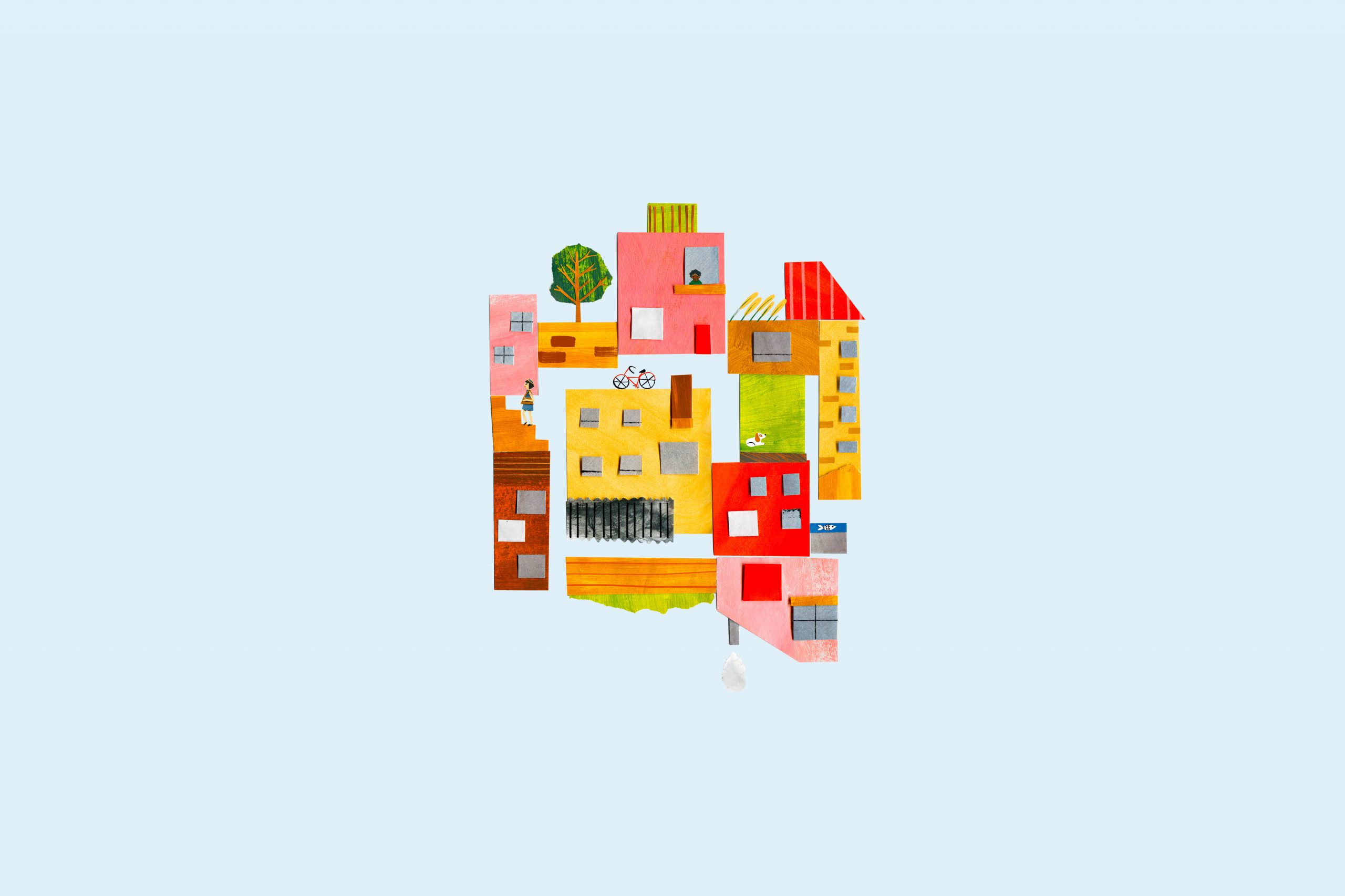Housing
“…we have to take a multigenerational, long view of this earth. We are in a society that looks at the 140-character tweet, the 10-second soundbite, and clicks. The long view is that we have seven generations before us, and seven generations after us – and that is your scope of responsibility.” – Jodi Gillette
How can our generation, our children and their children’s generations afford to remain in cities, even as the world is becoming mostly urban? And if we manage to stay, how will we live as we grow old together? How can living in cities in the digital age be a story of resilience and equity, not precarity, exclusion and atomisation? The housing we build today will outlast us – will we be proud of what we leave behind?
As these pages are going to print, the Gatwick Hotel in Melbourne’s St Kilda is going on sale. Formerly run (privately) as makeshift crisis housing for between 100-300 people, the 68-room hotel has been turned into five luxury apartments, now listed for seven-figure prices. The renovation was the subject of a reality TV show The Block, which purchased the building in 2017. If there is a story emblematic of how wrong we got our priorities around housing, this is it.
This issue of Assemble Papers is presented in partnership with our friends at MPavilion, and informed by the dialogue grown around the Naomi Milgrom Foundation’s Living Cities Forum. Housing is in crisis around the world – but the solutions, too, are part of this global conversation. Good housing, like healthcare or education, is a necessity. We all need to sleep somewhere every night – and this alone makes it an exceptional moral hazard to leave the provision of adequate housing entirely to the market. Meanwhile, Melbourne has been termed the fifth most unaffordable housing market in the world: the median house price hovers somewhere between $800-900,000, or 9.9 times the median income. At the same time, 24,000 Victorians are homeless, and almost 400 people sleep rough every night, almost half of whom are on the public housing waiting list, which stretches for years. How did we get ourselves here?
“Form follows finance,” says Jack Self: we have created a system that rewards short-term profit over social good. Saskia Sassen, renowned researcher of globalisation, agrees, pointing out that modest families have been thrown under the bus as an overactive high-finance sector turns buildings into financial assets. In our rush to profitably invest, we forget the materiality of buildings, the bricks and mortar that keeps us dry, safe, and near our friends and families – a paradox illustrated by the ‘forgotten’ boom houses in Spain, and the sublime landscapes on Melbourne’s edge, captured by Tom Ross. Alexis Kalagas’s investigation into ‘proptech’ in London reminds us that we all need affordable housing close to jobs – rich and poor alike.
Social housing used to be an object of civic pride, says Davide Tommaso Ferrando, but it was also an opportunity for research into designing housing and neighbourhoods of the highest quality. In many places, that commitment is no longer there, as evidenced by the turning fates of Robin Hood Gardens in London and Gino Valle’s Giudecca complex in Venice. But in some places, it still is: Amsterdam’s commitment to rent security and social diversity has meant that almost 50 percent of rental housing is owned by non-profit housing associations, while Finland has effectively solved homelessness with Housing First, a commonsense approach arising out of a strong value placed on solidarity and social cohesion.
If this issue of Assemble Papers tells the story of how we got here, it also tells the story of how we can do better. Where regulations are flexible and innovative forms of finance exist, small but significant practices such as Ryue Nishizawa and the UK-based Assemble are able to maintain a rigorous investigation into participatory processes and truly groundbreaking architectural forms for multi-family living and building. From Germany and Scandinavia to Nightingale and our own Assemble Model, a multitude of innovative housing development models are being tested and successfully scaled up. What matters is that we remember our duties to one another: in the words of Carme Pinós, the architect of the 2018 MPavilion, “architecture starts with social responsibility”.
